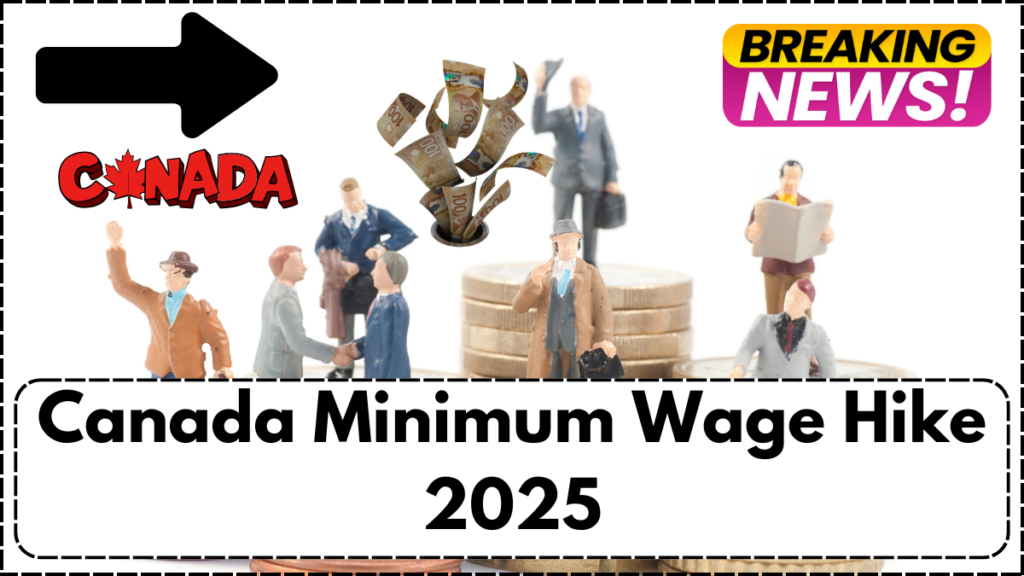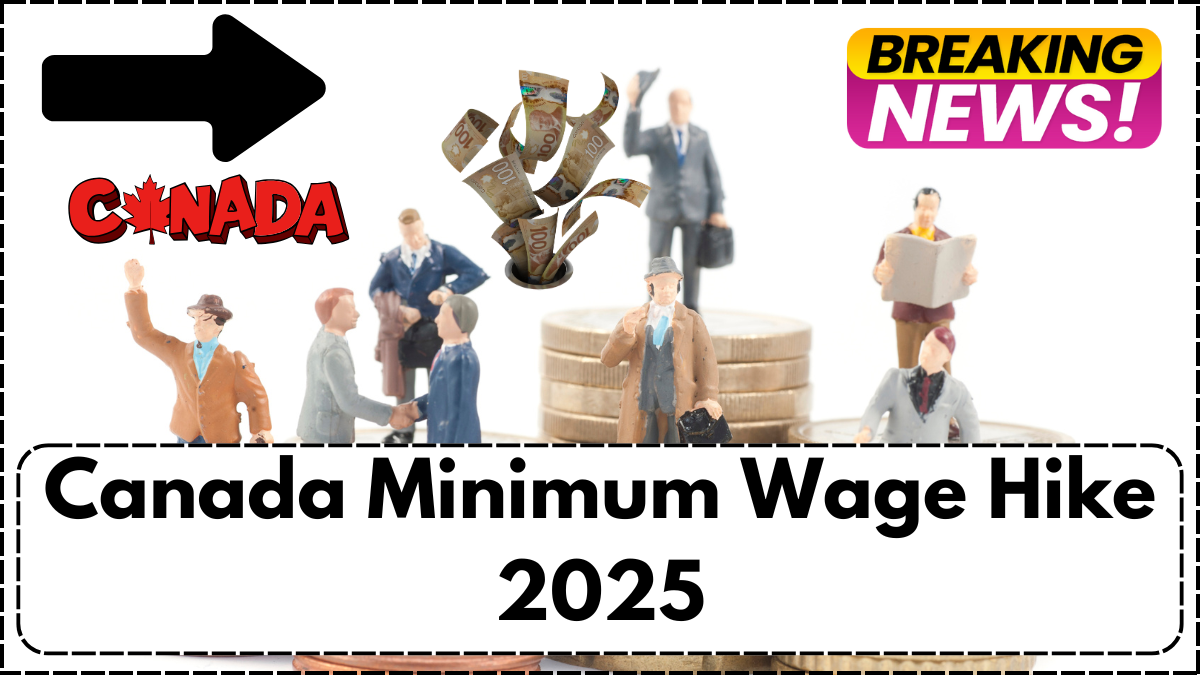In April 2025, Canadian workers across several provinces and territories will see a bump in their hourly pay as minimum wage rates rise. This move reflects a nationwide effort to address the pressures of inflation, a higher cost of living, and widening income gaps. While the increases vary by region, the goal is consistent: to ensure that Canadian workers are compensated fairly in a challenging economic environment.
This update provides an in-depth look at which provinces and territories are adjusting their minimum wage in 2025, how much those increases will be, and what these changes mean for employees and employers alike.

Minimum Wage in Canada: An Overview
Minimum wage is the lowest legal hourly rate that employers must pay workers. In Canada, this rate is set by individual provinces and territories, not the federal government—except in specific federally regulated sectors such as banks, telecommunications, and transportation.
Each jurisdiction adjusts its wage policies based on local economic conditions, inflation rates, and living costs. The most common benchmark for setting or adjusting minimum wage is the Consumer Price Index (CPI), which tracks changes in the cost of common goods and services.
As of April 2025, the federal minimum wage is $17.30 per hour, but this only applies to federally regulated industries. For most Canadians, the wage rate depends on where they live and work.
2025 Minimum Wage Increases by Province and Territory
The following table outlines current rates and the anticipated increases across Canada in 2025:
| Province/Territory | Current Wage (2024) | New Wage (2025) | Effective Date |
|---|---|---|---|
| New Brunswick | $15.30 | $15.77 | April 1, 2025 |
| Nova Scotia | $15.00 | $15.40 | April 1, 2025 |
| Newfoundland & Labrador | $15.60 | $15.91 | April 1, 2025 |
| Yukon | $17.59 | $17.97 | April 1, 2025 |
| Quebec | $15.75 | TBD | May 1, 2025 (est.) |
| British Columbia | $17.40 | TBD | June 1, 2025 (est.) |
| Northwest Territories | $16.05 | TBD | September 2025 (est.) |
| Ontario | $17.20 | $17.82 | October 1, 2025 |
Key Provincial Wage Adjustments for 2025
New Brunswick
The minimum wage in New Brunswick will increase to $15.77 per hour on April 1, 2025. The province ties its wage adjustments directly to the CPI, ensuring wages keep pace with inflation.
Nova Scotia
Nova Scotians will see their minimum wage rise to $15.40 per hour, also on April 1, 2025. This move supports low-income earners as housing and food prices continue to rise in the province.
Newfoundland & Labrador
In Newfoundland & Labrador, the minimum wage will grow to $15.91 per hour. This scheduled increase reflects a broader effort to address economic pressures felt especially in rural areas.
Yukon
Yukon already has one of the highest minimum wages in Canada. The increase to $17.97 per hour (effective April 1, 2025) reflects the higher cost of living in Northern Canada.
Quebec
Although the exact figure has not been finalized, Quebec’s minimum wage is expected to rise from $15.75 starting in May 2025. Updates are expected to be announced by the Quebec Ministry of Labour closer to the effective date.
British Columbia
British Columbia plans to revise its minimum wage in June 2025, currently sitting at $17.40. The exact increase will be guided by inflation data from early 2025 and is likely to push the wage closer to or above $18 per hour.
Northwest Territories
With a current wage of $16.05, the Northwest Territories is reviewing options for a raise later in September 2025. A formal announcement is expected mid-year.
Ontario
Ontario’s wage will increase from $17.20 to $17.82 on October 1, 2025, following its annual CPI-based adjustment schedule. This is especially significant in the context of urban centers like Toronto, where cost of living remains high.
Why These Wage Increases Are Necessary in 2025
Several key economic and social factors are driving these changes:
-
Inflation: Canadians are paying more for groceries, housing, transportation, and utilities. Adjusting minimum wage helps prevent wage erosion and keeps workers from falling behind financially.
-
Living Wage Gaps: While minimum wage is the legal floor, a “living wage”—what it actually costs to meet basic needs—is often higher. These increases help close that gap.
-
Workforce Stability: With ongoing labour shortages in retail, hospitality, and healthcare, higher wages can help attract and retain workers.
-
Economic Equity: Raising wages is a step toward reducing income inequality, especially among marginalized communities and young workers.
Frequently Asked Questions (FAQ)
What is the federal minimum wage in Canada in 2025?
As of April 2025, the federal minimum wage is $17.30 per hour for employees in federally regulated industries.
Which province has the highest minimum wage in 2025?
Yukon currently leads with $17.97 per hour, reflecting higher living costs in the North.
How are minimum wage rates calculated in Canada?
Most provinces use the Consumer Price Index (CPI) to adjust wages, ensuring that rates align with inflation and rising living costs.
Are there exceptions to minimum wage laws?
Yes. Some workers, such as students, servers earning tips, and workers in training, may have different wage rules depending on the province.
Will more provinces announce increases later in 2025?
Yes, several provinces like Quebec, British Columbia, and the Northwest Territories have pending updates expected in the coming months.
Click here to learn more
Pari is a passionate writer known for captivating stories that blend imagination and reality. Inspired by travel, history, and everyday moments, Pari crafts narratives that resonate deeply with readers.
